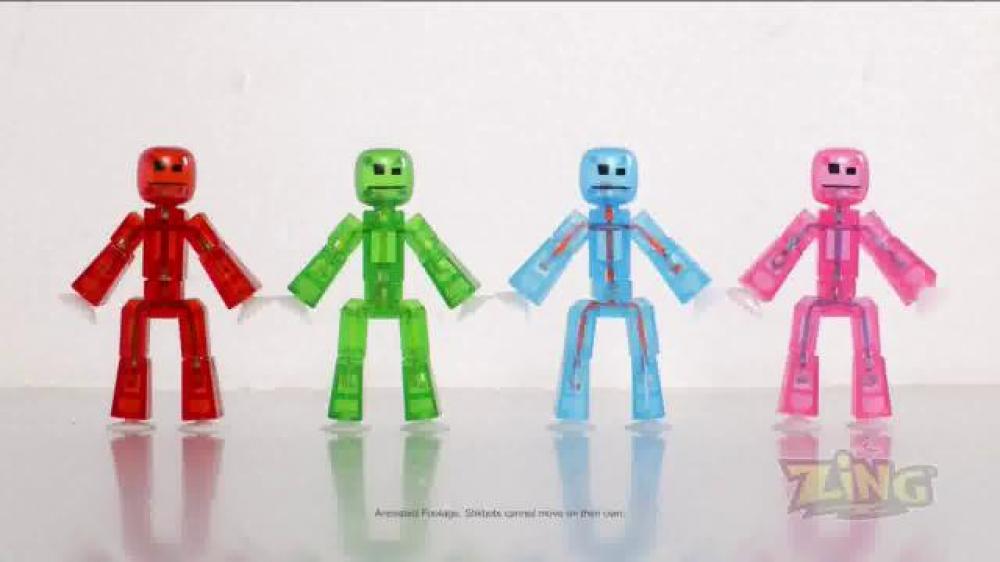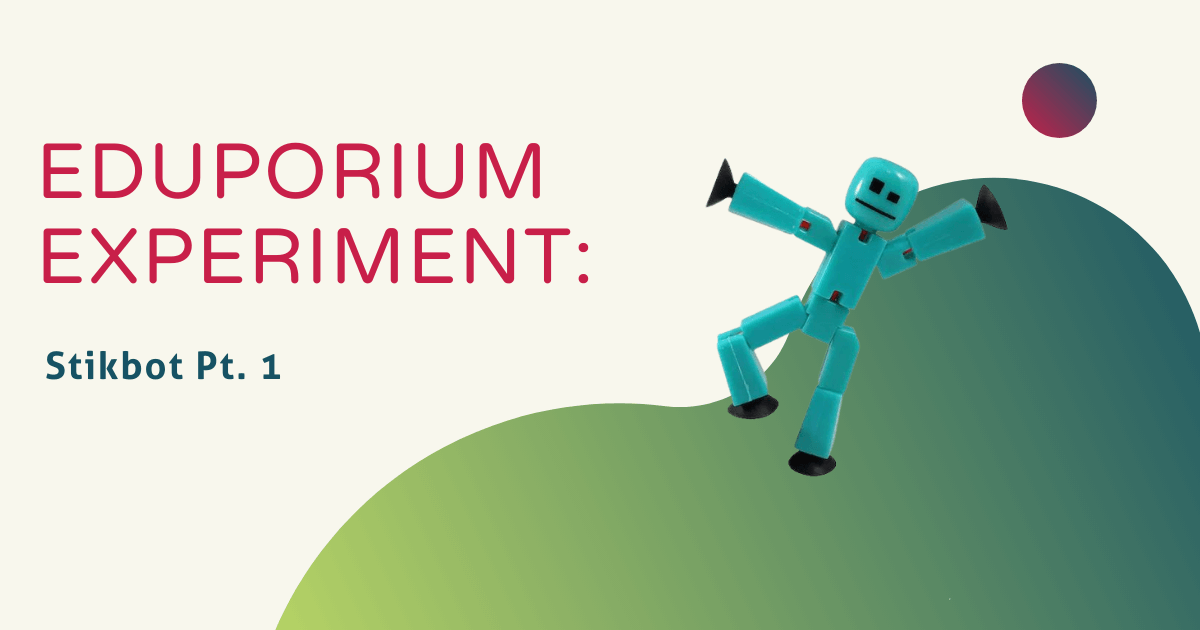In this week’s Eduporium Experiment, we’re taking a break from robots and drones to explore the A in STEAM—art. Skills in the arts and humanities are critical in today’s rapidly-advancing, digital world. They encourage creative thinking, self-expression, and independent learning—all of which are essential ingredients in the recipe for student success! Here to help students develop that all-important creative streak is the StikBot—a personable, posable toy that brings a stop motion animation studio to your own living room or classroom.
The Stikbot, which is made by Zing, makes stop motion animation fun, easy, and accessible for even the youngest learners. The toys are very low-tech as they’re essentially just a 3D stick figure that comes with a smartphone tripod and its own free-to-download app. The simplicity of the design allows kids to start creating their own movies in minutes!
This week, I took a bit of time out of my day to play with our Stikbots and discover their magic for myself. True to its promise, all I needed to do was download the app, and I was good to go. The app is extremely simple to use, with an interface that’s pretty much completely intuitive. While I love animation (it was actually part of my college major), I didn’t have enough time to sit down and create a stop motion movie. Those can take days! Instead, I opted to try out the photography feature of the Stikbot app.

The most time-consuming part of this week’s experiment, as you might imagine, was posing the Stikbots. This isn’t a criticism, though! It’s just the nature of working with posable puppets and, depending on how creative kids can be, it can be a lot of fun. The bots are very easy to work with, and they are designed to hold the positions in which they’re placed. Their arms and legs are notched in various ways to allow for a full range of movement, and the stretchy string that makes up their “skeleton” is very flexible and forgiving. Once I got my photo taken (featuring one of our mini Eduporium keychains, made with a 3D printer, I discovered another fun feature of the Stikbot app—stickers (how appropriate)! As you can see, I took full advantage of that particular feature.
After I played around within the app, I went online to check out the movies other people have made with Stikbots. As it turns out, Stikbot movies are very popular right now! Stikbots have their own official YouTube channel, Stikbot Central, where the company posts videos made by Zing employees and members of their community. They even host regular contests, the winners of which are posted to the channel. I was very impressed by the quality of the videos, too! They are well-produced, and I can tell that a lot of love went into making them. Zing clearly works hard to build a community around these toys, and it shows in the Stikbot Central subscriber count, which is almost at 400,000!
I definitely think that the Stikbot mission is very cool: get kids excited about stop motion animation and keep this very old style of art alive while modernizing it and using technology to make it appeal to a new kind of audience. Stikbots encourage students to take their creativity to new limits and create exciting pieces of art and, because of that, they have earned a place in any modern creative classroom.
If you have an idea for a product you’d like to see featured on the Eduporium Experiment, let us know! Comment below or send us a message on Twitter or Facebook!



